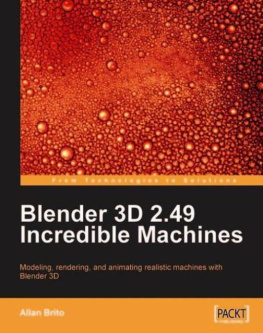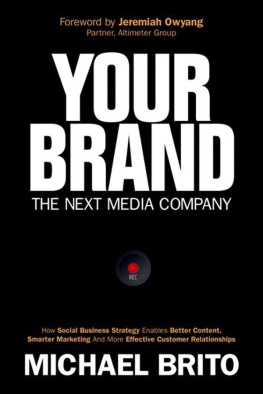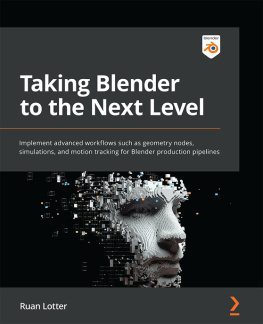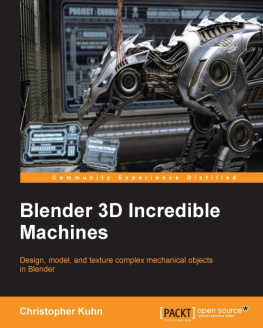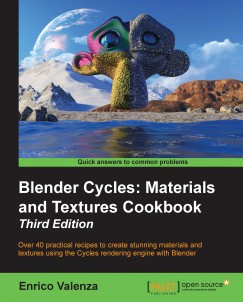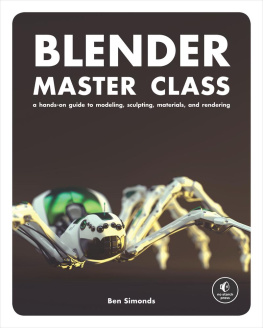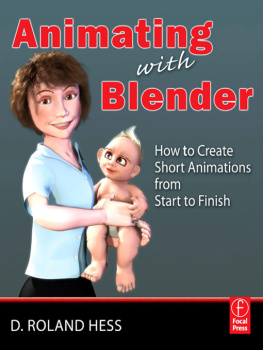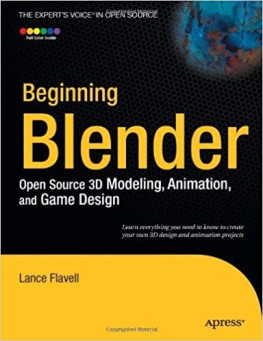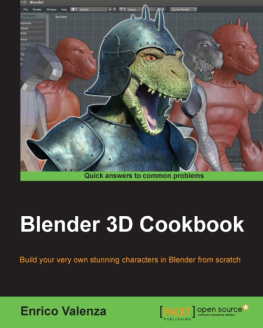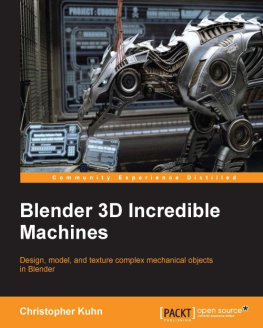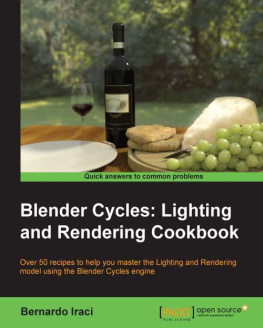Swapna V. Verlekar
About the Author
Allan Brito is a Brazilian architect specialized in information visualization. He lives and works in Recife, Brazil. He works with Blender 3D to produce animations and still images for visualization and instructional material. Besides his work with Blender as an artist, he also has a large experience in teaching and researching about 3D modeling, animation, and multimedia.
He is an active member of the community of Blender users, writing about Blender 3D and its development for websites in Brazilian Portuguese (http://www.allanbrito.com) and English (http://www.blendernation.com).
This is his third book on Blender 3D, the first one was Blender 3DGuia do Usurio , which was published in Brazil. It's a guide on how to use Blender that covers everything from the basics to character animation. The second book, Blender 3D: Architecture, Buildings, and Scenery , covers the use of Blender for architectural visualization. It is written in English, and is published by Packt Publishing.
He can be reached at his website, http://www.blender3darchitect.com, where he covers the use of Blender 3D and other tools for architectural visualization.
I would like to thank my family for supporting me during the production of this book, especially my wife rica, and my parents Maria and Luiz.
About the Reviewers
Claudio "malefico" Andaur is an argentine CG artist residing in Buenos Aires. He graduated as a Chemical Engineer from Universidad Tecnologica Nacional, Buenos Aires, Argentina in 1998.
He started working with Blender and open source applications in 2000. He was increasingly involved in Blender animation projects mainly for television shows. In 2003, he was part of the team who wrote the Blender 2.3 Official Guide . In 2005, he quit his regular job as an engineer and started working as one of the project leaders of Plumiferos , a CG feature film project made in Blender. In his blog (www.malefico3d.org), he likes to write about character animation, rigging, and personal projects. In 2008, he started his own animation studio called Licuadora Studio (www.licuadorastudio.com).
Claudio, better known as "malefico" in the Blender community, has given lectures and classes in Argentina, Venezuela, Colombia, Belgium, and Spain, as well as the Blender Conference in Amsterdam, The Netherlands on several occasions.
I'd like to thank my wife Laura for her constant support and patience, and my fellow Licuadores: Ivan, Manuel, and Diego.
Yorik van Havre is a Belgian architect who currently lives and works in Brazil. Blender occupies a big portion of his daily work. He regularly writes articles and tutorials about Blender, architecture, and architecture software, and is actively involved in several communities and open source projects. He has also reviewed Allan's previous book, Blender 3D: Architecture, Buildings, and Scenery . More about Yorik's work can be found at his website: http://yorik.orgfree.com.
Preface
Blender 3D provides all the features that you need for creating super-realistic 3D models of machines for use in artwork, movies, and computer games. Blender 3D 2.49 Incredible Machines gives you step-by-step instructions for building weapons, vehicles, robots, and more.
This book will show you how to use Blender 3D for mechanical modeling and product visualization. Through the pages of the book, you will find a step-by-step guide to create three different projects: a fantasy weapon, a spacecraft, and a giant robot. Even though these machines are not realistic, you will be able to build your own sensible and incredible machines with the techniques that you will learn in this book along with the exercises and examples.
All three sections of this book, which cover three projects, are planned to have an increasing learning curve. The first project is about a hand weapon, where we will model a small-sized object with tiny details. This first part of the book will show you how to deal with these details and model them in Blender 3D.
In the second project, we will create a spacecraft, adding a bit of scale to the project, as well as new materials and textures. With this project, we will be working with metal, glass, and other elements that make the spacecraft.
At the end, we have a big and complex object, which is a transforming robot. This last part of the book will cover the modeling of two objects and show how you can make one transform into the other. The scale and number of objects in this project are quite big, but the same principles, as in the other projects, are applied here with a step-by-step guide on how to go through the workflow of the project.
What this book covers
: Machinery Modeling and Visualization with Blender introduces us to a few concepts and relevant information about this book and, of course, talks a bit about this incredible software called Blender 3D, and how we can take advantage of all of the tools of Blender. It gives a brief description of its history and also explains us the concept of an Incredible Machine.
: Modeling a Handgun gets us started with working on the first of the three projects of this bookmodeling of a handgun. It explains why a handgun was chosen for our first project, what the final image of the project will look like, our modeling workflow, and the modeling technique that will be used to work on this project.
: Polygon Modeling of the Weapon guides you through the first steps of the modeling by using concept drawings to create a base model in Blender. The base model is very important to add details and upgrade the first flat surfaces into something more complex. This chapter tells us how to set up and configure a background image, and how to model and transform a mesh by using the background image as a guide. It also demonstrates the use of various tools such as Edge Loop tool, Face Loop Cut tool, and 3D Cursor as a tool.

